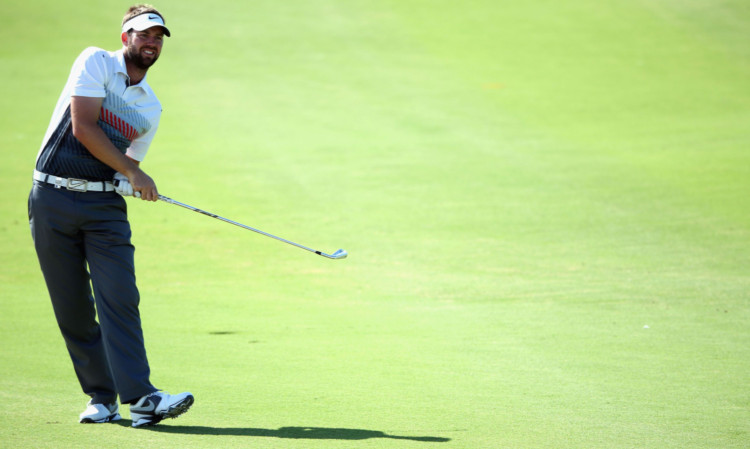
Shooting a 59 on the European Tour has turned into golf’s equivalent of the four-minute mile.
We’re still waiting for our Roger Bannister moment, but I would expect the barrier to be broken very soon.
Peter Uihlein and Scott Jamieson have come so close to doing it in the last two tournaments, only to miss out on a birdie at the last and settle for a 60. Peter hit a good putt at Kingsbarns, while Scott’s chip just rolled past the cup at the Portugal Masters.
So it was a question of bad luck rather than succumbing to the expectation.
The PGA Tour has seen six 59s, including Jim Furyk at last month’s BMW Championship, but it’s only a matter of time before there’s one in Europe.
A golfer suddenly gets in the ‘zone’ and anything is possible. He drives it straight, takes dead aim at the flags and expects to hole everything on the greens. The ball is almost on the end of a string and, in that sort of mood, a 59 definitely comes into the equation.
But everything now is in the players’ favour to shoot really low scores. The courses are in perfect condition, the golf ball is going further and straighter, and that brings more players into contention.
Unless you’re going to make monster golf courses or bring the rough in, we’re going to enter an era of very low scoring. But that’s not necessarily a bad thing.
Tournaments like the Dunhill Links, Portugal last week, or somewhere like Phoenix in the United States are all geared up for low scores, and the spectators there want to see birdies and eagles galore.
That will never happen at a Major, though. The people responsible want to have as severe a test as possible for the best players, and that’s why those events remain so special.
However, the R&A have been making subtle changes to the Old Course at St Andrews as when there’s no wind, it can be an easy test for the modern golfer. What’s interesting, though, is that none of Uihlein, Jamieson and Furyk won the event in which they shot their low round.
That shows you the overall standard, and it’s almost impossible to win a regular Tour event these days without one exceptional round. But it’s very difficult to follow up a 60 or 61 as the next day, the magic has somehow gone. It’s hard to explain but something just feels different.
My best-ever competitive round was a 63 which I shot en route to winning the WD & HO Wills Tournament in 1969 at Moor Park, just outside London. Back then, a 60 was almost unattainable. So I had to play lights-out golf for that 63.
Today we’re almost ambivalent if someone shoots something in the mid-60s, but as a pro, you would always settle for that score on the first tee.
Trust me, there’s no such thing as a bad 65!

Enjoy the convenience of having The Sunday Post delivered as a digital ePaper straight to your smartphone, tablet or computer.
Subscribe for only £5.49 a month and enjoy all the benefits of the printed paper as a digital replica.
Subscribe